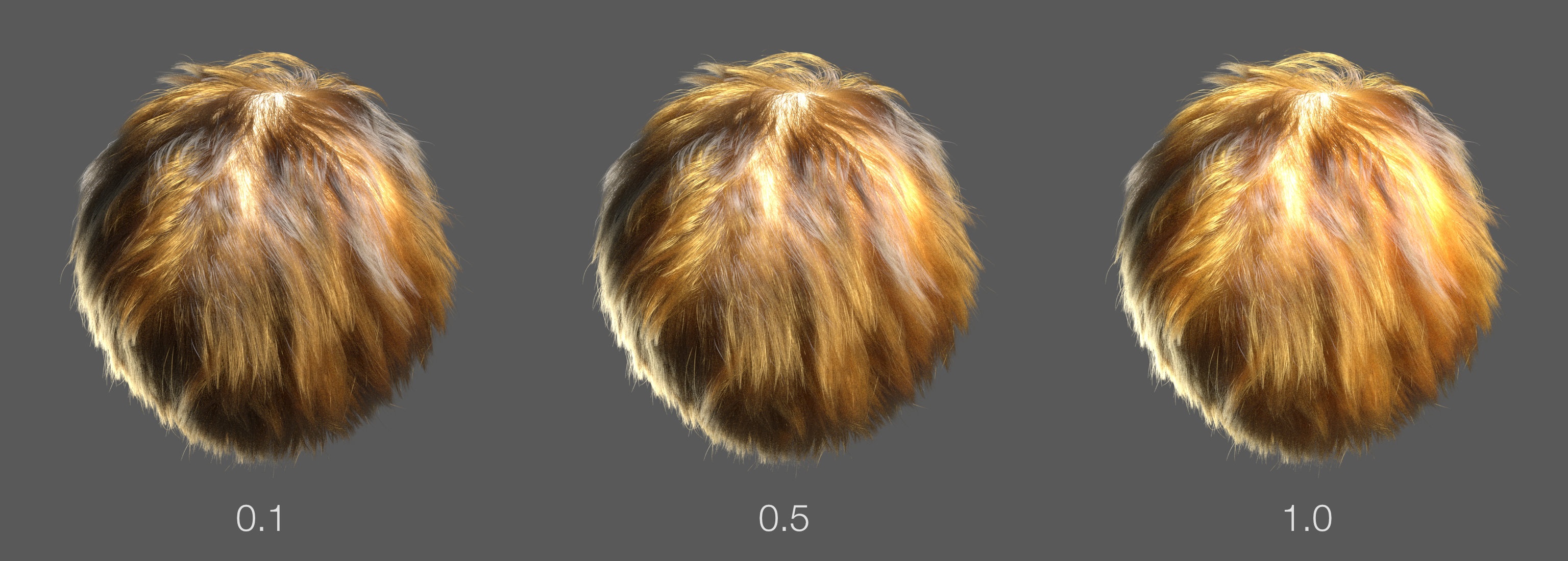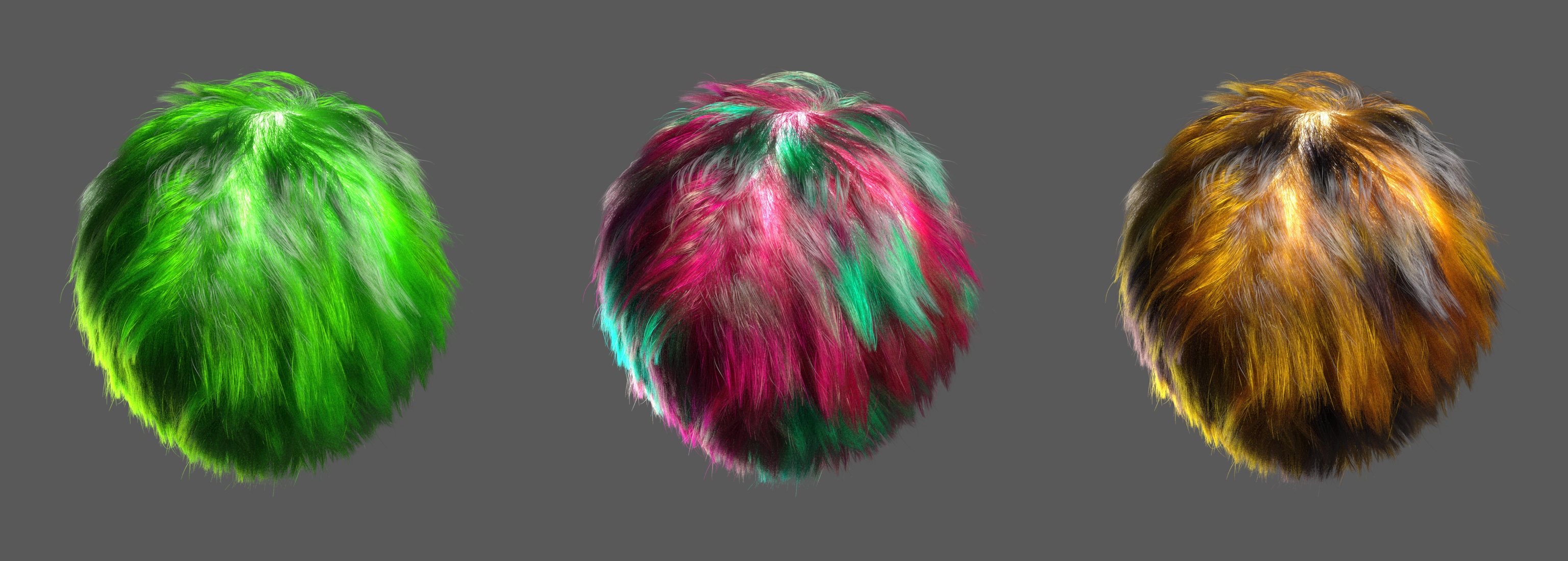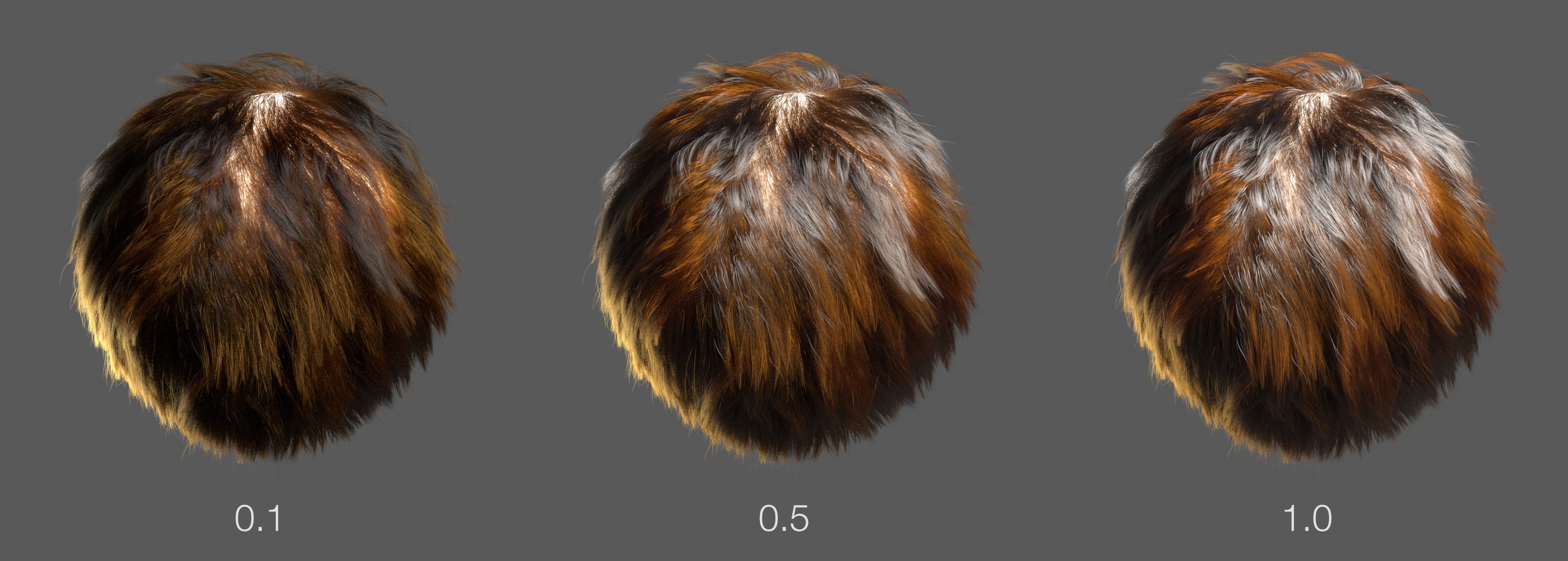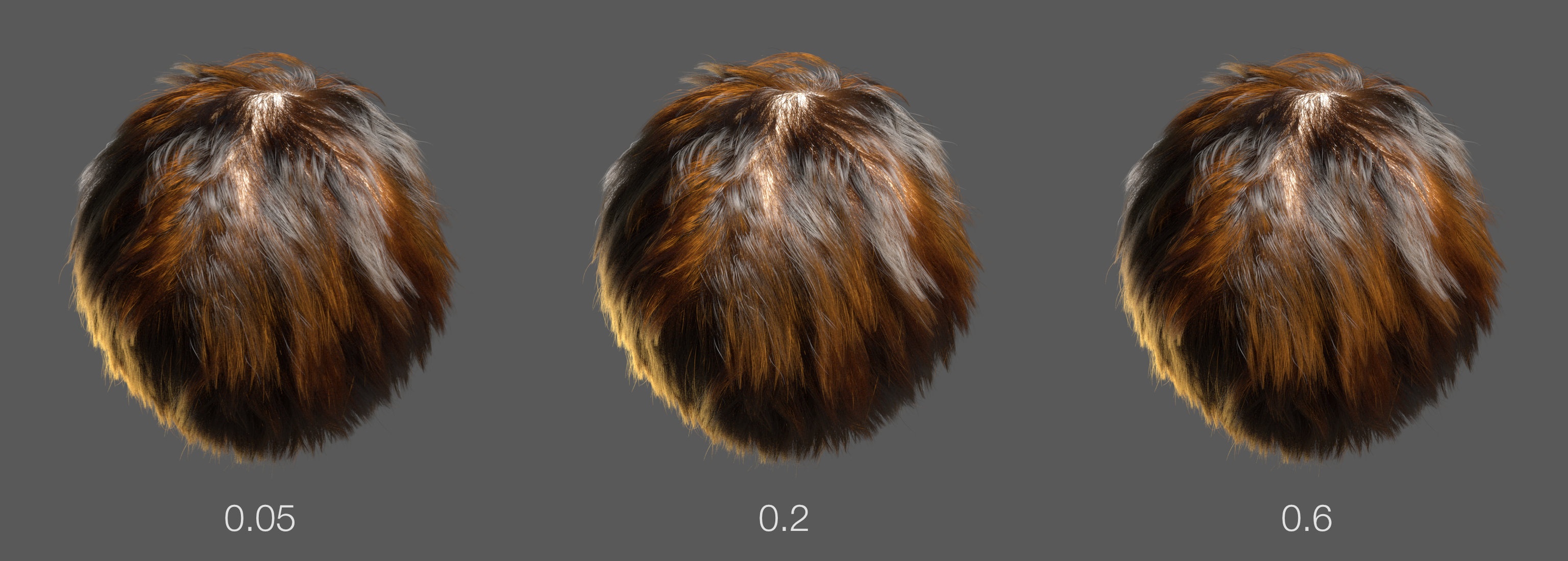Melanin Redness
Dye Color
Melanin
Specular Level
Roughness Along
Roughness Around
The 3Delight Hair and Fur material is an artist friendly, yet physically plausible, hair and fur shader. Internally, the shader relies on a Monte-Carlo simulation to explore the different light paths inside a medium (in this case, a clump of hair) to produce an image. The complexity of this process is hidden from the artist which controls only high level shader parameters such as color and roughness.
Below are four example renders of varying hair color. Note the glow caused by light scattering inside blond and light coloured red hair. Also note how black hair has nice silky features. The "glint" is caused by caustics inside hair strands and is not an after thought of the shading model. All these features necessitate proper simulation of light scattering in hair clumps.
Parameters Description
Overall Look | |
|---|---|
Color | This is the overall color of the hair clump. |
Longitudinal Roughness | Longitudinal roughness (i.e. scattering) determines the specular lobe along the length of the hair. This parameter plays an important role on the final look as shown in the images below. |
Azimuthal Roughness | |
Primary Multiplier | |
Components Weights | |
Reflection Weight | The contribution of Reflection (R) to the final result. |
Transmission Weight | The contribution of Transmission (TT) to the final result. |
TRT Weight | The contribution of 2nd Order Reflection to the final result |
| Note that the different weights are actually a balance between the different components. In other words, the weights are normalized so as to conserve the overall energy in the system. | |
Glints | |
Index of Refraction | The index of refraction of each hair strand. |
Cuticle Angle | This values, expressed in radians, expresses the slope of each cuticle on a hair strand. |
Glint Strength | The intensity of the glint effect, which are caused by caustics reflections inside the hairs and are typically driven by the roughness of the reflections. |
Glint Softness | Wether the glints are sharp or soft. |
Technical Description
An interesting aspect of hair rendering is that all the intricate visual details seen in hair stem from the scattering of light in a multitude of hair strands and is not due to the complexity of the BRDF on a single hair strand. This seemingly simple observation explains why so many complex shaders are not successful at conveying a realistic look for hair. This includes the widely used shaders based on the Marschner model not using volume scattering. The shader simulates 3 scattering events from one single hair strand and then proceeds with a Monte-Carlo simulation to follow light paths inside the hair volume.
Two observations:
- There are is diffuse component. Most shaders have an ad-hoc diffuse term to approximate the soft look of hair. In reality, this soft look is caused by light scattering and is not related to a classic diffuse BRDF.
- No control over directly reflected color. Direct reflections have the same color as the incoming light. Any coloured visual features are due to light passing through a strand of hair.
The three main components of light scattering: Reflection (R), Transmission (TT) and 2nd Order Reflection (TRT).
R is the light directly reflected from the surface of a hair strand. In many other hair materials this is referred to as the primary highlight. TT is the transmission of light through the hair strand and interacting with the interior of the strand (absorption). This is responsible for the back lighting visible through the hair when a light is behind a hair clump. TRT is the secondary reflection of light traveling through the hair twice before going back to the same side it entered. As this light path gets absorbed twice it is dimmer than R and TT. In many other hair materials this is referred to as the secondary highlight. The following images show a final image and each component rendered separately.
Final | R | TT | TRT |










